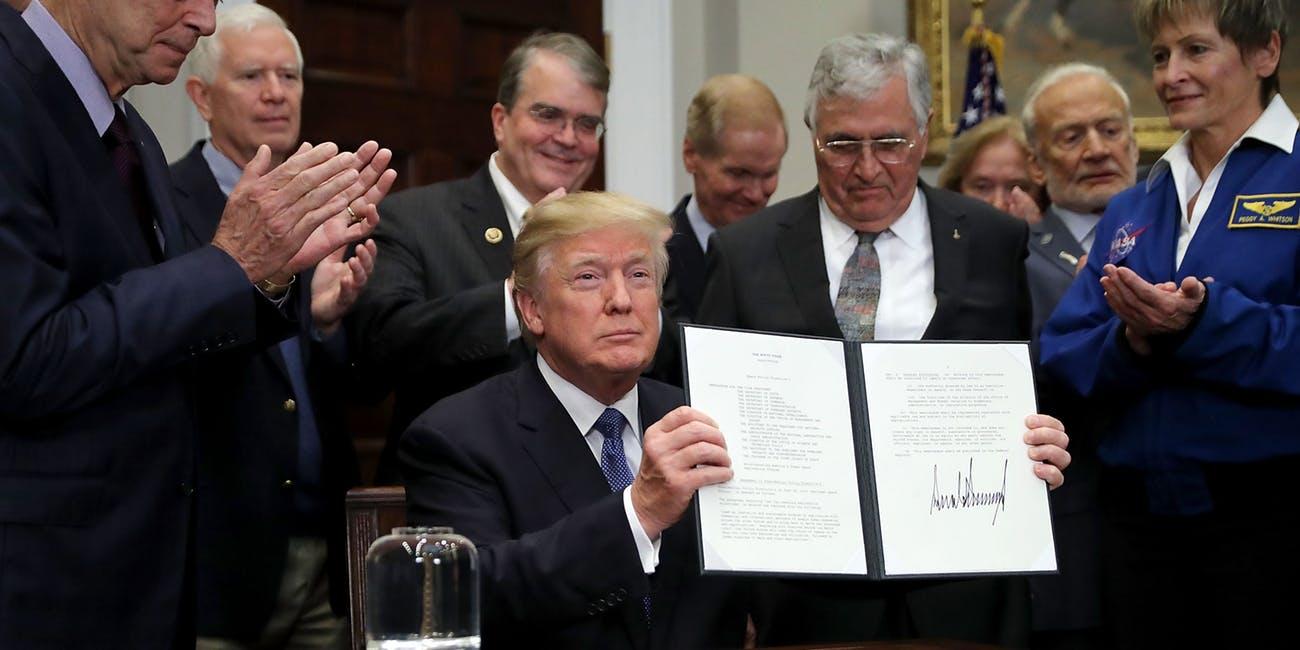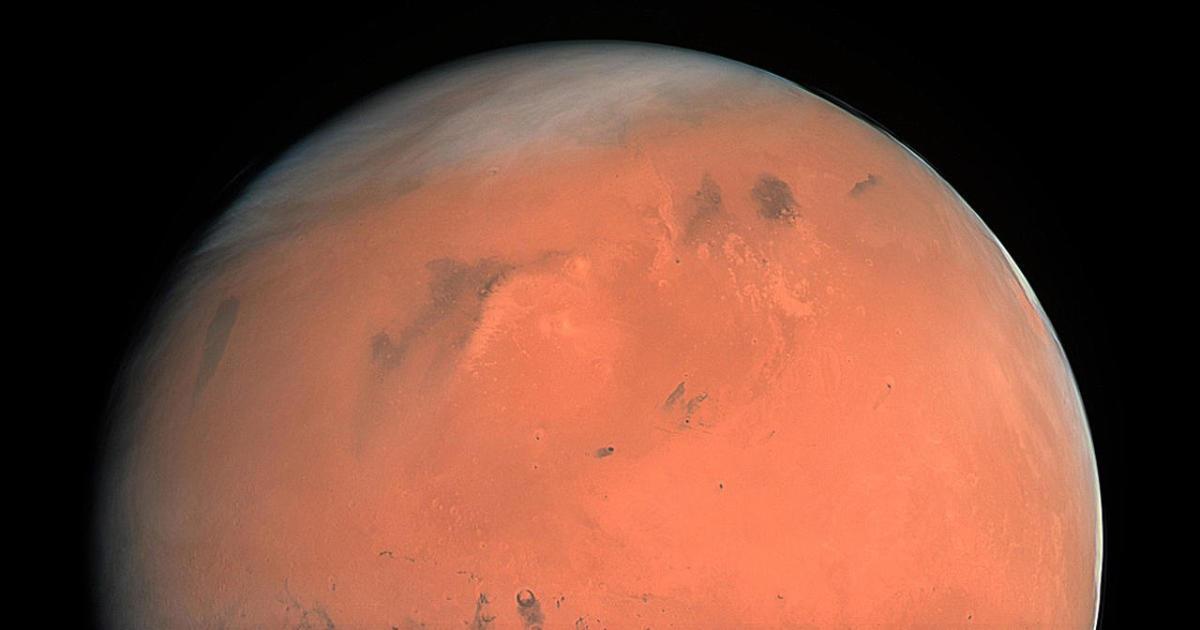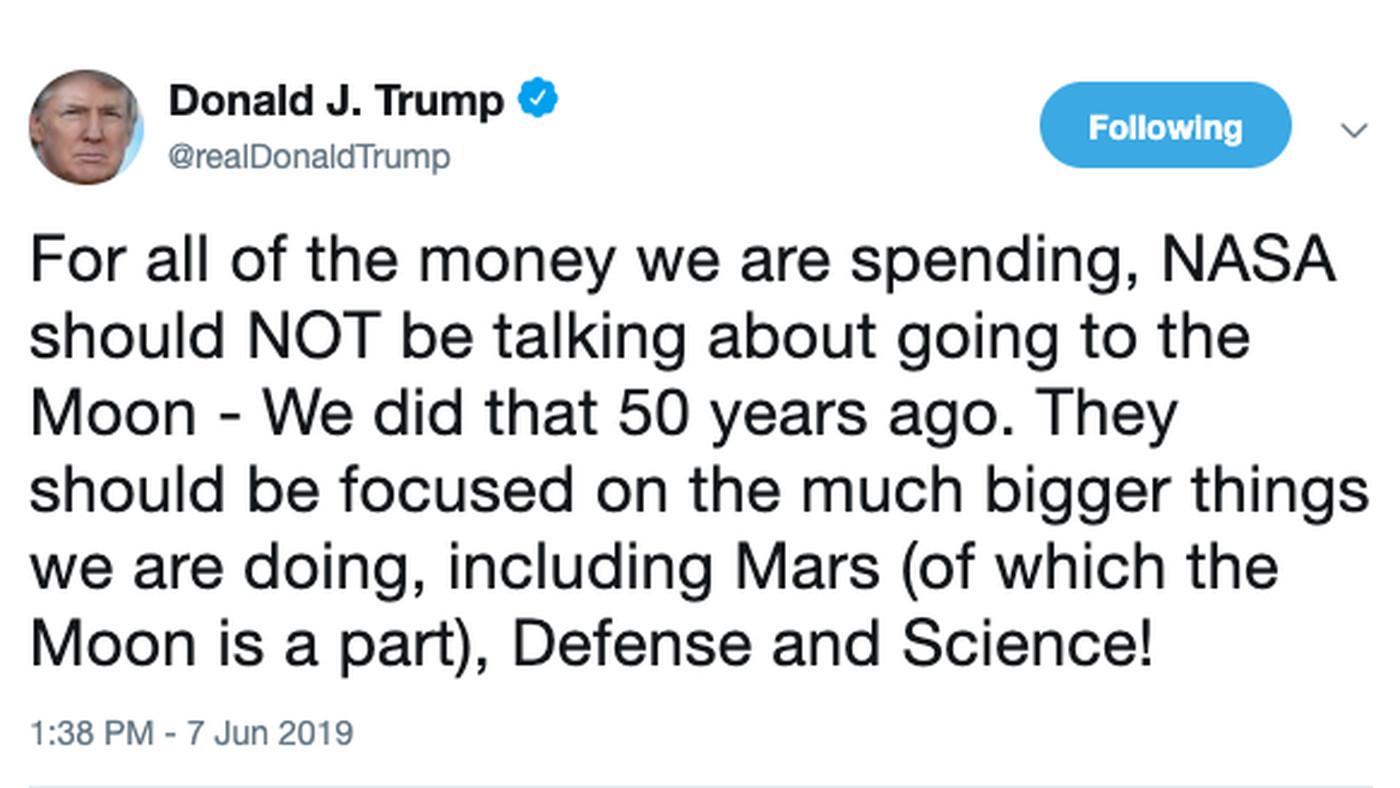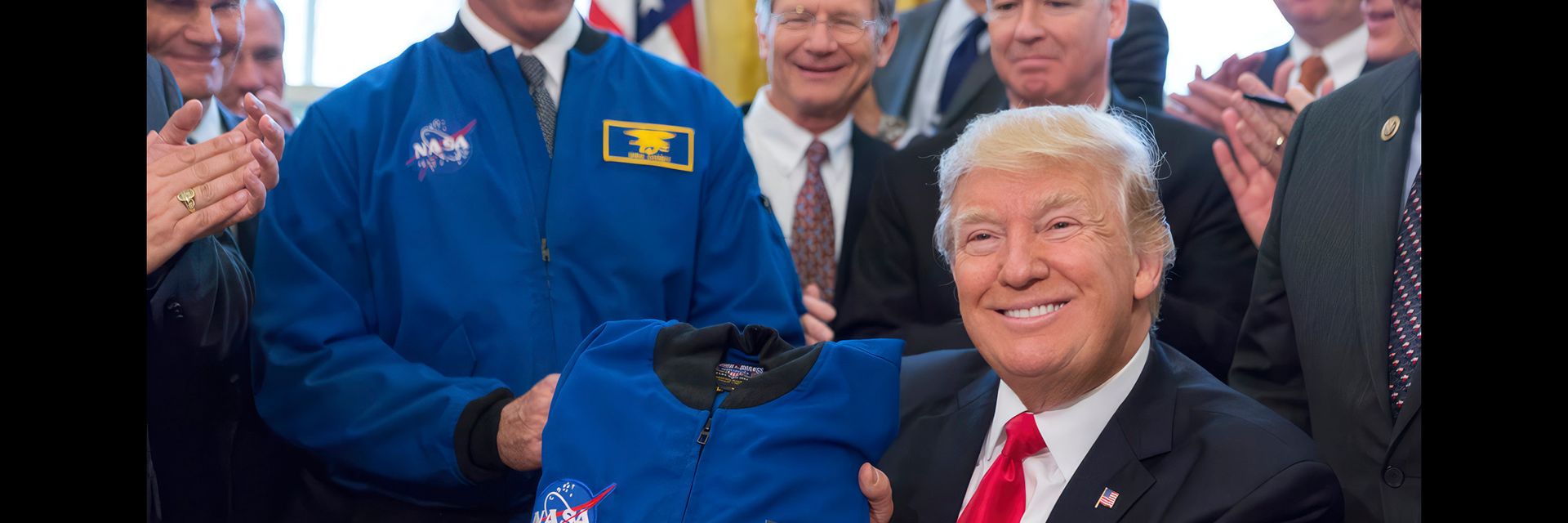As we celebrate the 50th anniversary of the Apollo 11 Moon landing, let’s not forget that NASA has become once again a powerhouse space agency, with current plans to land a two-person crew – including at least one woman – on the lunar surface by the year 2024. If that sounds ambitious, it is; NASA has moved its schedule up twice, most recently from 2028 to 2024, in response to challenges issued by the Trump White House.
◊
This summer, we are commemorating the Apollo 11 mission, which landed the first two astronauts on the Moon on July 20, 1969. More than that, we’re also celebrating the spirit, drive, and determination displayed by all those involved in the multiyear Apollo program, from the “right stuff” astronauts to all the scientists, engineers, and teams that collaborated on making the mission the watershed event it was.
Click here to stream " In the Shadow of the Moon"
And this time, the ultimate goal is not only to visit the Moon’s surface, but to expand the mission to define the future. You might say that the U.S. is beginning to map out the future of the Solar System to set the stage for its domination of space. It’s a new space race, but this time with Russia as a potential partner rather than the Soviet Union as a rival.
President Launches New Initiative to Return Astronauts to the Moon (and Beyond)
Before 2017, NASA had slated “the late 2020s” as a rough date to launch its next lunar mission. But that was before the presidential administration of Donald Trump, which has reignited the American desire to “conquer” outer space. In 2017, the first year of his presidency, Trump authorized the reestablishment of the National Space Council under the direction of Vice President Mike Pence. Pence led the council to its unanimous approval of crewed missions into space, including landing on and physically studying other heavenly bodies.
The National Space Council approval of the president’s goals led to the crafting of an executive document called Space Policy Directive-1, detailing a set of challenges to NASA that are worth a little unpacking.
In the directive, the president authorizes:
- Partnering with commercial and international entities to ensure the program’s success.
- Returning humans to the Moon.
- Establishing a sustainable presence on the Moon.
- Preparing for a crewed mission to Mars.
- Enabling human expansion “across the solar system.”
- Bringing back to Earth “new knowledge and opportunities.”
- Preparing the Moon for long-term exploration and exploitation.
NASA accepted the challenges inherent in the directive, agreeing to accelerate its existing plan for a crewed mission to the Moon from sometime in the late 2020s to the specific date of 2028. Additionally, NASA agreed to include Mars in its mission planning, as well as exploring human travel to the “deeper solar system” beyond the Red Planet.

President Trump signing NASA bill aimed at sending people to Mars (Image courtesy of NASA/Aubrey Gemignani)
Upping the Ante: The President Moves Up the Timetable (Again)
While the agency set a course to lift objects and people off the face of their home planet and deliver them safely to the Moon, the White House was reconsidering its initial target of returning humans to the Moon’s surface by 2028.
In March 2019, less than a year-and-a-half after Directive-1 was announced, Vice President Pence took the unusual step of declaring that NASA would reach the Moon’s surface with a crew a full four years ahead of when it had been originally scheduled, moving the mission date to 2024.
NASA’s Administrator Jim Bridenstine, for his part, accepted the new schedule, promising to make changes to the earlier strategic plan and to deliver a landmark success to the administration during the Trump presidency (assuming his reelection in 2020). To underline the seriousness of the goal, the agency’s longtime associate administrator was reassigned and demoted on July 10th 2019 due to the Trump Administration’s concerns about NASA’s ability to deliver on its promises.
Getting to the Moon and Beyond, with Artemis
NASA’s new mission will be called the Artemis program. Artemis not only has a name associated with feminine energy, it is also going to foster the long-term goals of women in science by assuring that at least one member of the Moon landing crew will be a woman. Indeed, Bridenstine would not rule out an all-woman landing crew.
Artemis, Greek goddess and daughter of Zeus, was the twin sister of the god Apollo. In mythology, Artemis was the goddess of the Moon, as Apollo was the god of the Sun and light.
The most recent change to the timeline of the Artemis program caused Bridenstine to ask for and receive an emergency increase to his agency’s annual budget. The budget increase was approved by the president, adding another $1.6 billion to the agency’s existing annual budget of approximately $21 billion. Ultimately, Bridenstine estimates that his agency will need an additional $20 to $30 billion – above its existing budget – over the five years leading up to 2024.
(Image courtesy of Gregory H. Revera, via Wikimedia)
In the 1960s and 1970s, NASA spent more than $25 billion for the Apollo program (equivalent to over $170 billion today) from inception to conclusion, according to a 1973 report. So how will NASA pull off the remarkable feat of keeping the price so low compared to the cost of the Apollo program? “We’re doing this in a way that’s never been done before,” Bridenstine explains. “We are asking industry to invest in it, and we want to look at what their ideas are before we make bigger decisions.”
How to Do It? A Groundbreaking Public-Private Partnership
All this pressure to “lift off” on-schedule and on-budget might be cause for Bridenstine to pull out his hair. But, to the contrary, he is confident in the mission’s success partly because of the unprecedented method NASA is choosing for current and future endeavors. Opening the gates to commercial partnerships has, indeed, shown that companies are quite ready to step up and deliver their payloads for the success of the Artemis mission.
There are some very familiar names, and some new ones, in the list of commercial partners already announced by NASA. To begin, Boeing and Lockheed Martin are both working on massive projects. And of course, there are also some familiar “new faces” in the mix. One, American billionaire entrepreneur Jeff Bezos, is developing a lander prototype called Blue Moon through his company Blue Origin that could carry astronauts down to the Moon’s surface. Similarly, Elon Musk’s SpaceX is working on more and more powerful rockets, such as FalconHeavy, to help NASA deliver larger and larger payloads into space.
_(cropped).jpg)
Jeff Bezos and his "Blue Origin" project.
(Image courtesy of Van Ha, via Wikimedia)
Other companies involved in constructing NASA’s three robotic Moon landers have names like Astrobiotic, Intuitive Machines, and Orbit Beyond. In all, there are at least 15 private companies working on contracts from NASA. This is all in keeping with NASA Administrator Bridenstine’s stated desire to make space “an entrepreneur-friendly environment.”
Getting to the Moon and Beyond: NASA’s Plan to Conquer Space
According to Bridenstine, strategies to meet the new deadlines are already being implemented. Although the U.S. has no serious rivals in the quest to establish a presence in outer space, the number one reason for this remarkable step-up in activity is to establish America’s leadership and strategic presence in the heavens – and planets – beyond Earth.
The U.S. government intends that its space missions will expand the U.S. global economic impact and, ultimately, broaden American industrial and international government partnerships in space – with the U.S. clearly in the lead.
The Artemis program will be comprised of several elements. These include:
- The SLS rocket, from Boeing (along with thousands of subcontracting firms), which will be used to launch both crews and payloads;
- The Orion spacecraft, from Lockheed Martin; and
- Gateway, from MAXAR Technologies, a combination command center/space station that will eventually be capable of supplying both fuel and propulsion to craft taking off from the Moon deeper into space.
Three flights of Orion spacecraft are scheduled between 2020 and 2024. The first will be an uncrewed test flight to check out the craft’s functionality. The second will be a crewed mission that will orbit the Moon and then return to Earth.
Why Gateway? Some critics have claimed that its objectives could be carried out by the existing International Space Station (ISS), with some modifications to serve the Artemis program. But Gateway, much further out than the ISS, has many functions that ISS was not designed for. In fact, NASA is encouraging Russia, Europe, Japan, and Canada to contribute ideas to make Gateway successful.
It’s the third Orion flight, now scheduled for 2024, that is causing all the excitement. After the warm-up trips, it will carry two U.S. astronauts, including at least one woman, to the Moon. They will begin the historic task of setting a framework for further habitation and development of the lunar surface.
From the Earth to the Moon, and from the Moon to Mars
That third Orion mission is slated to land at the Moon’s South Pole. Why in that location? Well, simply put, it’s familiar to Moon explorers. Robotic Moon rovers have examined that lunar landscape more thoroughly than other areas. We know the terrain there better than any other spot we could touch down.

After the Moon, the next big jump is to Mars. (Image courtesy of NASA)
Additionally, scientists believe there are substantial deposits of water ice to be found on and near the surface there. And that’s significant. If astronauts are going to establish an ongoing presence on the Moon, they need precious supplies, such as water and air, that can’t be freighted from the Earth in sufficient quantities. The Moon’s ice could be harvested, then broken down into its two elements, hydrogen and oxygen. These gases – oxygen for its life-sustaining properties and hydrogen for its potential as rocket fuel – would eventually be used to support the long-term mission goals, as filmmaker David Sky Brody mentioned in his interview with MagellanTV.
Without these resources, it would be considerably more difficult to sustain a human presence off-Earth and to support interplanetary travel. But if the gamble pays off, the course of our planetary history will be broadened and changed forever.
What Are the Implications of “Conquering” Outer Space?
When President Trump famously tweeted about NASA’s new plans, his phrasing was a bit garbled, setting cultural wags to ridicule him for the out-of-context phrase “Mars (of which the Moon is a part).” In context, it’s clear he was talking about both short- and long-range NASA space exploration plans. The U.S.’s plan to return to the Moon is a big story, of course, but astronauts going beyond the Moon to Mars is really an enterprise of a different order.

Click to follow to the Twitter link.
As Trump said, “Defense and Science” are equally important facets of the U.S.’s new space strategy. So, despite all the hoopla surrounding the 50th anniversary of Apollo 11’s historic landing on the Moon, perhaps it’s just as important – if not more – to understand what the President means. If the three most important takeaways from the Artemis mission plans are Mars, Defense, and Science, much is left unexplained in this venture.
What is the U.S.’s purpose in attempting to send astronauts to Mars? Is it pure science, or is the U.S. looking to exploit the minerals that may be found there? And do Americans seek to have strategic control of outer space to defend against enemies? If so, which enemies would they be?
We don’t know yet the full extent of the Administration’s plans for the Moon, Mars, and beyond – Trump’s goals always seem to be moving targets – but it’s probably a good idea that we ask for answers. While it may be true that there have been some instances of space militarization already, such as spy satellites, it would be a step of another order to extend “Defense” activities into space (as highlighted by the proposed creation of a U.S. Space Force).
We are left with a big question: Who will “own,” or at least militarily and strategically control, outer space?
Ω
Kevin Martin is Senior Writer for MagellanTV. He writes on a wide variety of topics, including outer space, the fine arts, and modern history. He has had a long career as a journalist and communications specialist with both nonprofit and for-profit organizations. He resides in Glendale, California.
Title image: President Donald Trump holds up a jacket he was given by a guest, Tuesday, March 21, 2017, after signing the National Aeronautics and Space Administration Transition Authorization Act in the Oval Office via Wikimedia Commons.

